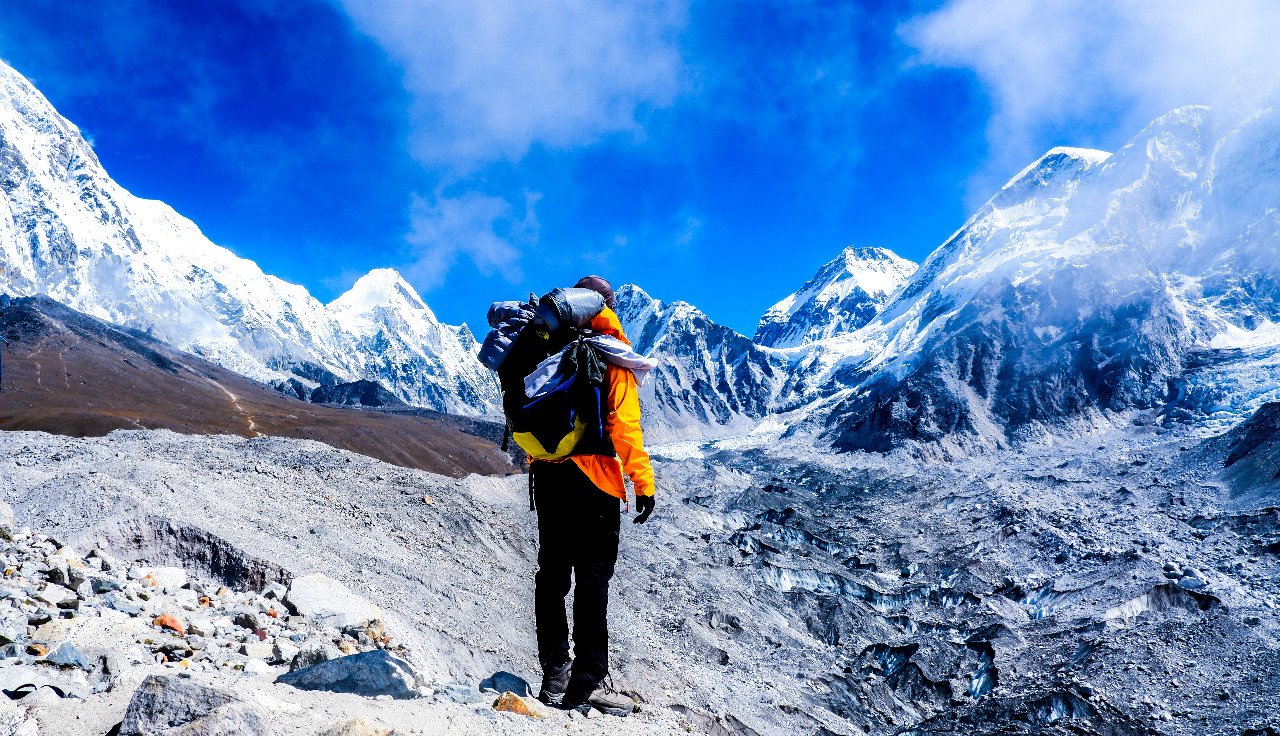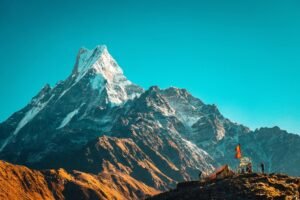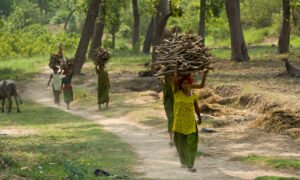The Himalayas, with their towering peaks and breathtaking landscapes, offer some of the world’s most exhilarating trekking experiences. Among these, base camps serve as both the gateway to high altitude climbs and as destinations for trekkers seeking to experience the grandeur of these majestic mountains. This article delves into the top five Himalayan base camps, exploring their unique characteristics, trekking routes, cultural significance, and the best times to visit. Whether you’re an experienced trekker or a passionate adventurer, these base camps promise an unforgettable journey.
- Everest Base Camp (EBC), Nepal
Overview
Everest Base Camp is arguably the most famous trekking destination in the world. Located at an altitude of 5,364 meters (17,598 feet), EBC serves as the starting point for climbers aiming to conquer Mount Everest, the highest peak on Earth. The trek to EBC offers not only stunning views of Everest but also an immersive cultural experience through the Khumbu region.
Trekking Route
The classic route to Everest Base Camp starts from Lukla, a small town with a notoriously challenging airstrip. The journey typically spans 1214 days, covering approximately 130 kilometers round trip. Key stops along the route include:
Phakding: The initial descent from Lukla to Phakding helps trekkers acclimatize gradually.
Namche Bazaar: Known as the gateway to the high Himalayas, Namche Bazaar is a bustling market town that offers a chance to acclimatize and explore local culture.
Tengboche: Home to the famous Tengboche Monastery, this village offers panoramic views of Everest, Lhotse, and Ama Dablam.
Dingboche: Another acclimatization stop, Dingboche provides stunning views of the surrounding peaks and valleys.
Lobuche: A small settlement offering a glimpse into the rugged life at high altitudes.
Gorak Shep: The final stop before reaching Everest Base Camp, Gorak Shep is also the starting point for the trek to Kala Patthar, a viewpoint that offers the best closeup view of Mount Everest.
Highlights
Scenic Views: Trekkers are treated to views of some of the world’s highest peaks, including Everest, Lhotse, Nuptse, and Ama Dablam.
Cultural Immersion: The trek passes through Sherpa villages, offering insights into the local culture, traditions, and hospitality.
Historical Significance: Visiting the Everest Base Camp allows trekkers to walk in the footsteps of legendary climbers like Sir Edmund Hillary and Tenzing Norgay.
Best Time to Visit
The best times to trek to Everest Base Camp are during the pre monsoon (March to May) and post monsoon (September to November) seasons. During these periods, the weather is relatively stable, and the skies are clear, offering the best views of the mountains.
- Annapurna Base Camp (ABC), Nepal
Overview
Annapurna Base Camp, situated at an altitude of 4,130 meters (13,550 feet), is nestled within the Annapurna Sanctuary, a natural amphitheater surrounded by towering peaks. The trek to ABC is renowned for its diverse landscapes, ranging from lush subtropical forests to high altitude alpine meadows.
Trekking Route
The Annapurna Base Camp trek typically starts from Nayapul, a small town accessible by road from Pokhara. The journey usually takes 712 days, depending on the chosen route and acclimatization needs. Key stops along the route include:
Ghandruk: A traditional Gurung village offering stunning views of Annapurna South and Machapuchare (Fishtail Mountain).
Chhomrong: A significant stop along the route, Chhomrong provides excellent acclimatization opportunities and beautiful vistas.
Bamboo: Named after the dense bamboo forests, this stop is known for its serene environment.
Deurali: A small settlement at the base of the Modi Khola Valley, offering a glimpse into the rugged terrain leading up to the base camp.
Machapuchare Base Camp (MBC): Located at 3,700 meters, MBC serves as a preliminary base camp before reaching ABC.
Highlights
Diverse Ecosystems: The trek traverses various ecosystems, from tropical jungles to alpine landscapes, providing a rich biodiversity.
Spectacular Scenery: The Annapurna Massif, including Annapurna I (8,091 meters), offers breathtaking views throughout the trek.
Cultural Experience: Trekkers encounter local Gurung and Magar communities, experiencing their warm hospitality and unique culture.
Best Time to Visit
The best times to trek to Annapurna Base Camp are during the pre monsoon (March to May) and post monsoon (September to November) seasons. These periods offer clear skies, moderate temperatures, and minimal rainfall.
- Kanchenjunga Base Camp, Nepal
Overview
Kanchenjunga Base Camp, situated at an altitude of 5,143 meters (16,873 feet), offers a remote and less traveled trekking experience. Kanchenjunga, the third highest mountain in the world, stands at 8,586 meters (28,169 feet) and straddles the border between Nepal and Sikkim, India.
Trekking Route
The trek to Kanchenjunga Base Camp is more challenging and longer than many other Himalayan treks, typically taking 2025 days. The journey begins from Taplejung, which is accessible by road or a short flight from Kathmandu. Key stops along the route include:
Mitlung: The trek starts with a descent to the Tamur River and a gradual climb to Mitlyng.
Chirwa: A small village known for its terraced fields and hospitable locals.
Sekathum: Located at the confluence of the Ghunsa and Tamur rivers, Sekathum offers a picturesque setting.
Ghunsa: A significant acclimatization stop, Ghunsa is a beautiful Tibetan village with stunning views of surrounding peaks.
Kambachen: At an altitude of 4,050 meters, Kambachen provides excellent acclimatization opportunities and panoramic views.
Lhonak: The final stop before reaching the North Base Camp, Lhonak is situated at 4,780 meters and offers breathtaking scenery.
Highlights
Remote Wilderness: The trek to Kanchenjunga Base Camp takes you through some of the most remote and untouched regions of Nepal.
Cultural Richness: Trekkers encounter diverse ethnic groups, including the Rai, Limbu, and Sherpa communities.
Stunning Landscapes: The journey offers views of high alpine meadows, glaciers, and towering peaks, including Kanchenjunga and Jannu.
Best Time to Visit
The best times to trek to Kanchenjunga Base Camp are during the pre monsoon (April to May) and post monsoon (October to November) seasons. These periods offer stable weather conditions and clear skies, enhancing the trekking experience.
- Makalu Base Camp, Nepal
Overview
Makalu Base Camp, situated at an altitude of 4,870 meters (15,978 feet), lies at the foot of Makalu, the fifth highest mountain in the world at 8,485 meters (27,838 feet). The trek to Makalu Base Camp is known for its challenging terrain and breathtaking scenery, offering a rewarding experience for seasoned trekkers.
Trekking Route
The trek to Makalu Base Camp begins from Tumlingtar, accessible by a short flight from Kathmandu. The journey typically takes 1620 days, covering approximately 150 kilometers round trip. Key stops along the route include:
Num: The trek starts with a descent to the Arun River and a climb to the village of Num.
Seeduwa: A small village located within the Makalu Barun National Park, offering stunning views and a chance to acclimatize.
Tashigaon: The last permanent settlement before reaching the base camp, Tashigaon provides an excellent acclimatization stop.
Kongma: A high altitude pasture offering breathtaking views of the surrounding peaks.
Dobate: Located at 3,650 meters, Dobate is a significant stop for acclimatization and rest.
Yangri Kharka: A picturesque meadow surrounded by towering peaks, providing a tranquil setting for rest and acclimatization.
Langmale Kharka: The final stop before reaching Makalu Base Camp, Langmale Kharka offers stunning views and a sense of anticipation.
Highlights
Pristine Wilderness: The trek takes you through the Makalu Barun National Park, home to diverse flora and fauna, including the elusive snow leopard.
Stunning Scenery: The journey offers panoramic views of Makalu, Everest, Lhotse, and other towering peaks.
Cultural Encounters: Trekkers have the opportunity to interact with the local Sherpa and Rai communities, gaining insights into their unique cultures.
Best Time to Visit
The best times to trek to Makalu Base Camp are during the pre monsoon (April to May) and post monsoon (October to November) seasons. These periods offer stable weather conditions and clear skies, enhancing the trekking experience.
- Manaslu Base Camp, Nepal
Overview
Manaslu Base Camp, located at an altitude of 4,800 meters (15,748 feet), lies at the foot of Manaslu, the eighth highest mountain in the world at 8,163 meters (26,781 feet). The trek to Manaslu Base Camp is renowned for
its remote and rugged terrain, offering a less crowded but equally spectacular trekking experience.
Trekking Route
The trek to Manaslu Base Camp typically starts from Soti Khola, accessible by road from Kathmandu. The journey usually takes 1418 days, covering approximately 177 kilometers round trip. Key stops along the route include:
Machha Khola: The trek begins with a gradual ascent along the Budhi Gandaki River, reaching the village of Machha Khola.
Jagat: A picturesque village offering stunning views and an opportunity to acclimatize.
Deng: A small settlement known for its scenic beauty and warm hospitality.
Namrung: A significant stop for acclimatization, Namrung provides panoramic views of the surrounding peaks.
Samagaon: Located at 3,530 meters, Samagaon is a major acclimatization stop and the starting point for the side trip to Manaslu Base Camp.
Samdo: A high altitude village offering breathtaking views and a chance to acclimatize before reaching the base camp.
Highlights
Remote Beauty: The trek to Manaslu Base Camp takes you through some of the most remote and untouched regions of Nepal.
Cultural Richness: Trekkers encounter diverse ethnic groups, including the Gurung and Tibetan communities, experiencing their unique cultures and traditions.
Stunning Landscapes: The journey offers views of high alpine meadows, glaciers, and towering peaks, including Manaslu and Himlung Himal.
Best Time to Visit
The best times to trek to Manaslu Base Camp are during the pre monsoon (March to May) and post monsoon (September to November) seasons. These periods offer stable weather conditions and clear skies, enhancing the trekking experience.
Trekking to a Himalayan base camp is an adventure of a lifetime, offering an unparalleled combination of natural beauty, cultural richness, and personal challenge. The top five Himalayan base camps – Everest, Annapurna, Kanchenjunga, Makalu, and Manaslu – each offer unique experiences that cater to different trekking preferences and skill levels.
Whether you’re drawn to the iconic heights of Everest, the diverse landscapes of Annapurna, the remote wilderness of Kanchenjunga, the rugged beauty of Makalu, or the cultural richness of Manaslu, these base camps promise an unforgettable journey. By carefully planning your trek, respecting local cultures, and embracing the spirit of adventure, you can create memories that will last a lifetime.
Additional Tips for Trekkers
- Acclimatization: Proper acclimatization is crucial to prevent altitude sickness. Plan your trek with sufficient rest days and monitor your health closely.
- Physical Preparation: Train adequately before your trek. Focus on cardiovascular fitness, strength, and endurance to handle the challenging terrain.
- Packing Essentials: Carry essential gear, including warm clothing, a good quality sleeping bag, trekking poles, and a reliable backpack. Don’t forget a first aid kit and water purification tablets.
- Respect Local Cultures: Be mindful of local customs and traditions. Interact respectfully with local communities and support sustainable tourism practices.
- Environmental Responsibility: Practice Leave No Trace principles. Minimize your impact on the environment by disposing of waste properly and avoiding single use plastics.
Embark on your Himalayan adventure with a sense of wonder and respect for these magnificent mountains and the people who call them home. Happy trekking!





